By Megan Muratore
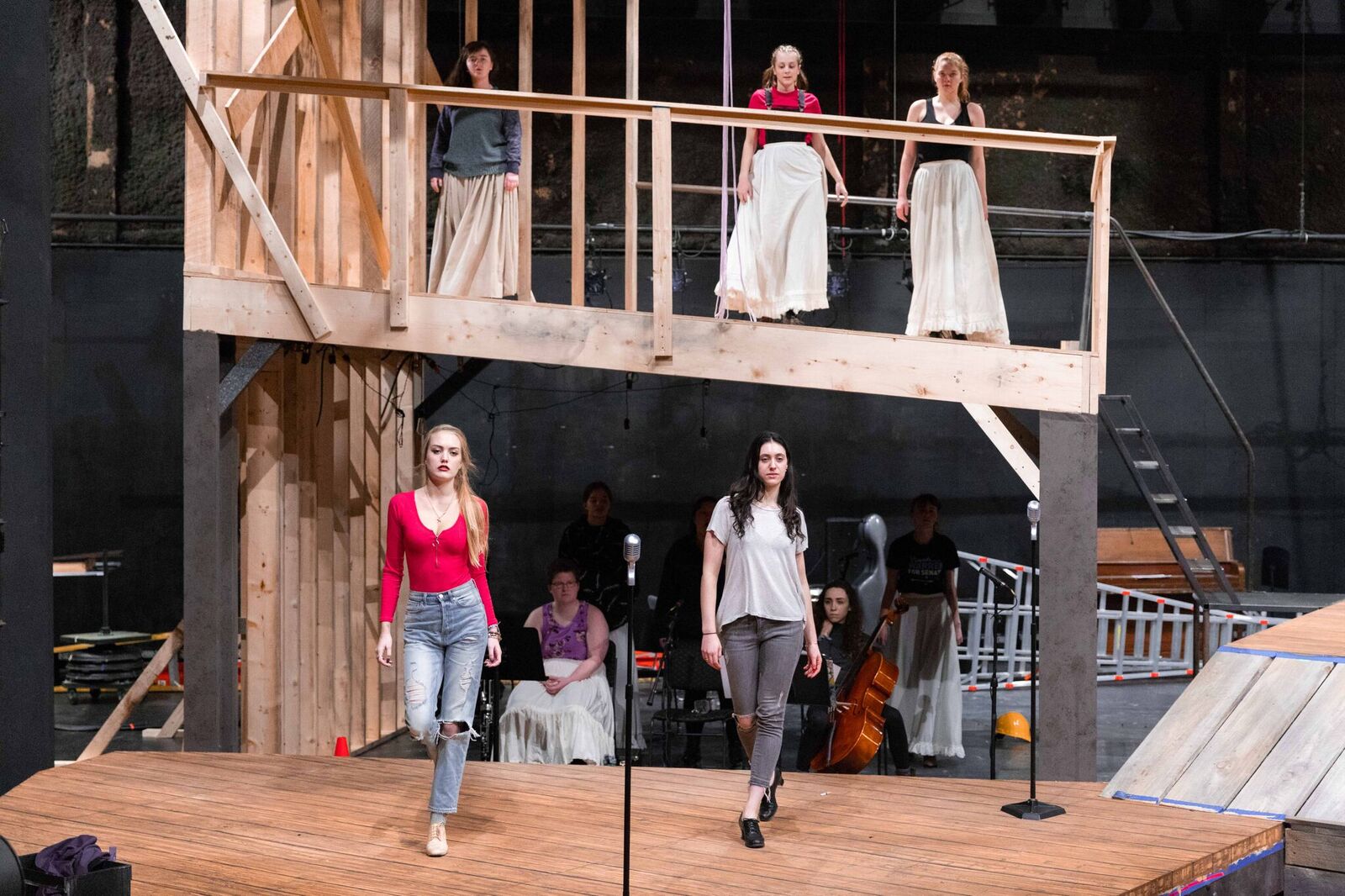
Photo: Dante Haughton ’19
When I walked into the mainstage for a run of We Used To Wear Bonnets & Get High All The Time, the actors had just finished warming up and were on a quick break before starting the show. The room was full of energy and a sense of community among the actors. At the start of most rehearsals, the actors of Bonnets warm up by doing a free-dance to a song Julia May Jonas, the director and playwright, puts on. This exercise is not only a way of physically warming up the body before running the show, but also a way of opening oneself up to the room and the other people within it. The free-dance serves as an expression of vulnerability and ensemble: two aspects which are integral to the play itself.
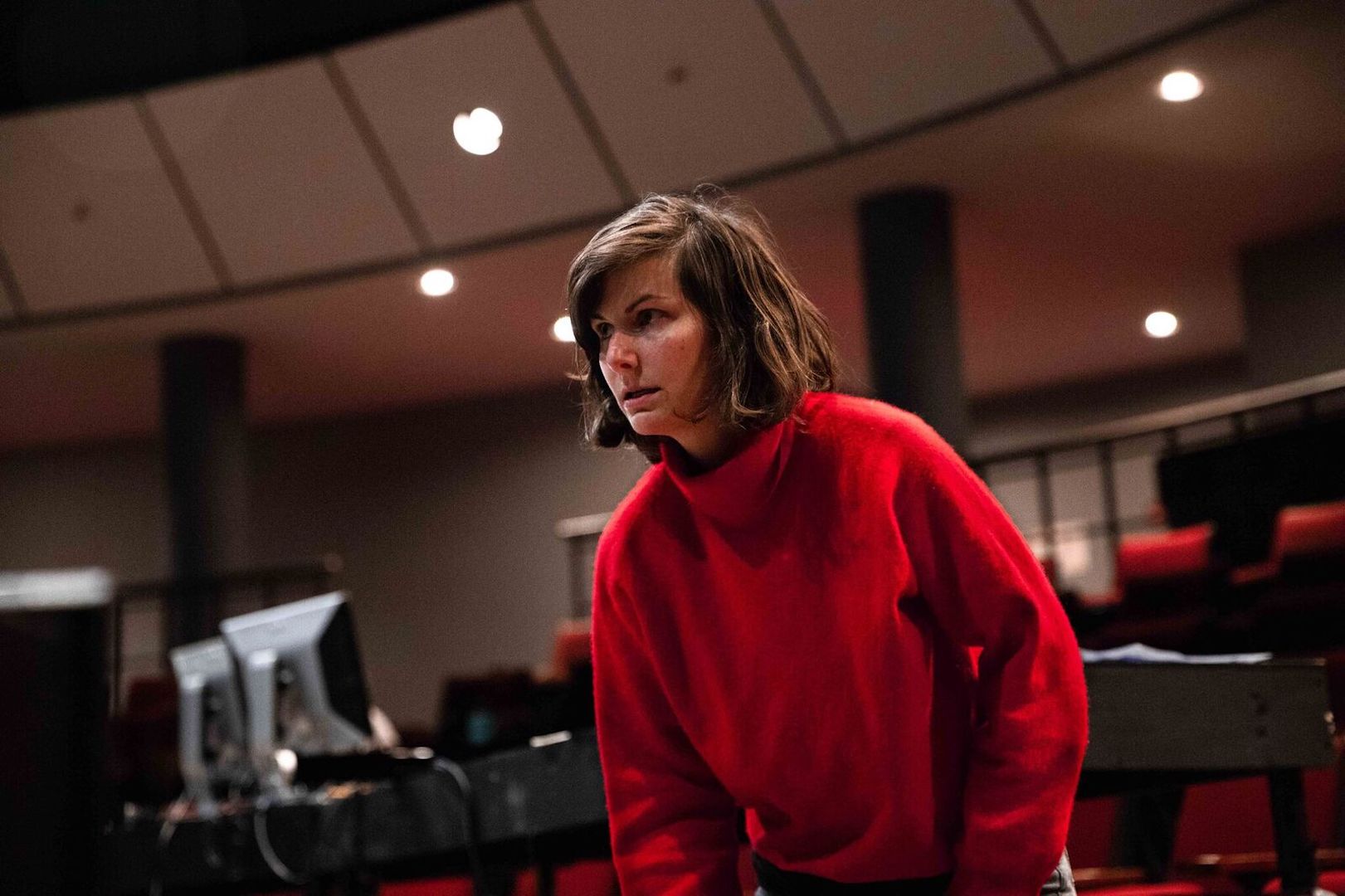
Playwright and Director Julia May Jonas leads a warm up. Photo: Dante Haughton ’19
Bonnets is Jonas’s response to Eugene O’Neill’s Long Day’s Journey Into Night, as part of her larger project of responding to canonical American plays written by male playwrights. Like Long Day’s Journey Into Night, Jonas’s Bonnets deals with themes of family, inherited trauma, and addiction, and takes place in four acts. Unlike O’Neill’s play, however, Bonnets takes place in four time periods (1890, 2018, 1949, and 1992, respectively) instead of the course of one day, and employs a large, all-female cast. In speaking to a few members of the ensemble, I found that many of the actors had the same feeling about working with an all-female cast: it provides a sense of support and safety that is not always present in a rehearsal process.
Bianca Thompson ’19, who plays Edith IV, states that working with an all-female cast has felt especially important in our current state of politics. “I remember having a difficult time during the week of the hearings leading up to Brett Kavanaugh’s Supreme Court confirmation. The national conversation surrounding sexual violence and this particular case of sexual assault against Dr. Christine Blasey Ford was altogether validating and invalidating, toxic and necessary, infuriating and empowering.” She goes on to say that in a play that centers around women throughout American history, sexual violence and assault is a topic that is inevitably present within the text. “Everyone in our cast knows how scary it can be to simply exist in a woman’s body. When I broke down in rehearsal, I was grateful to be surrounded by people around whom I felt unequivocally safe. Working with an all-female cast has been, above all else, healing. During our rehearsal process, I have been able to embrace all aspects of my femininity.”

Bianca Thompson ’19 (Edith IV) and Jessie March ’21 (Rose IV). Photo: Dante Haughton ’19
Olivia Bagg ’19, who plays Laura III, says that this is her second time working with an all-female cast at Skidmore. “Which is pretty awesome,” she remarks. “I think there’s an automatic sense of comfortability. There’s definitely a lot of trust in and out of the rehearsal room. We all joke around and say hi to each other around campus. That is not something I always feel when I’m working on a show.”
Bonnets employs triple casting of all of the roles (Laura, Meg, Edith, Rose, and Ollie), with different iterations of the named roles existing in the different time periods within the play. Having the shared character names serves as a sort of genealogy for the characters, either in literal family lineage, or in shared experiences of trauma, addiction, and family upbringing. While the show is broken up into four acts, the characters of each time period do not exist solely in their era; there are crossovers of time, and moments of recognition between the actors sharing the same character name. When the actors are not onstage in their act as their named role, they create a series of songs, dances, and soundscapes to shape the world of the play.
On the topic of ensemble work and soundscapes within the play, Jessie March ’21, who plays Rose IV, says, “we are always onstage, so there’s this constant awareness that every moment is part of the story.” She goes on to state that in Act I, all of the actors not in the scene drum a beat to emulate the grinding sounds of machinery—an example of how the cast works together to create an immersive experience onstage.
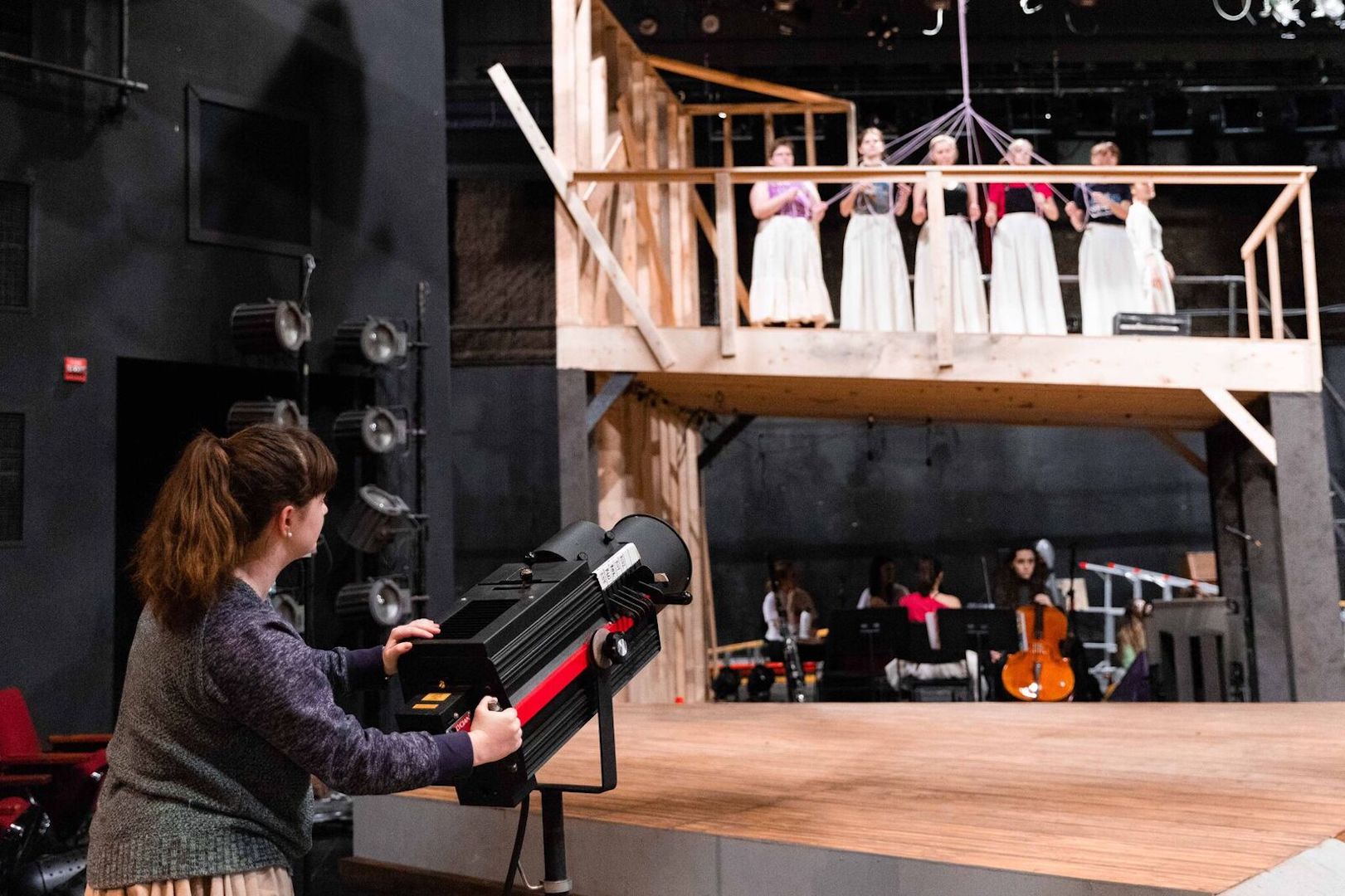
Kat Collin ’21 (Ollie II) operates a follow spot in Act I. Dante Haughton ’19
Along with the ensemble work creating the sounds of the world of the play, there is a sense of connection within the actors with the same character name. One of the ways this effect is created is through shared physicality. Bagg states that at the beginning of the process, Jonas had the actors get into their shared character groups and work together to create movement pieces related to their character descriptions within the play. She goes on to say that, “we each contributed different ideas based on our character’s time period, mental/physical state, etc. and put them together. I don’t know if I personally ever call on these movements intentionally, but they definitely live somewhere in my body when I’m onstage for my time period.”
Three of the acts of the play exist in historical time periods in America. For the actors in those time periods, I was interested in hearing what research they had done in terms of tone, as well as historical context and accuracy in portraying these roles. Rowen Halpin ’19, who plays Meg I in the first act says that, “I was initially kind of intimidated by the 1890s because it felt like such a foreign time period to me. Eventually I realized that my ‘way in’ was going to be through the concrete, physical biology of the scene. As part of my senior project I did a lot of research on the biology of addiction and trauma. I was able to take all of that research and combine it with what I have learned about the social implications of those things in the 1890s and let it inform my actions. I think the most important thing I’ve come to learn is that just because these women exist in a different time period doesn’t make them any less human. We have a lot more common ground than we may initially realize.”
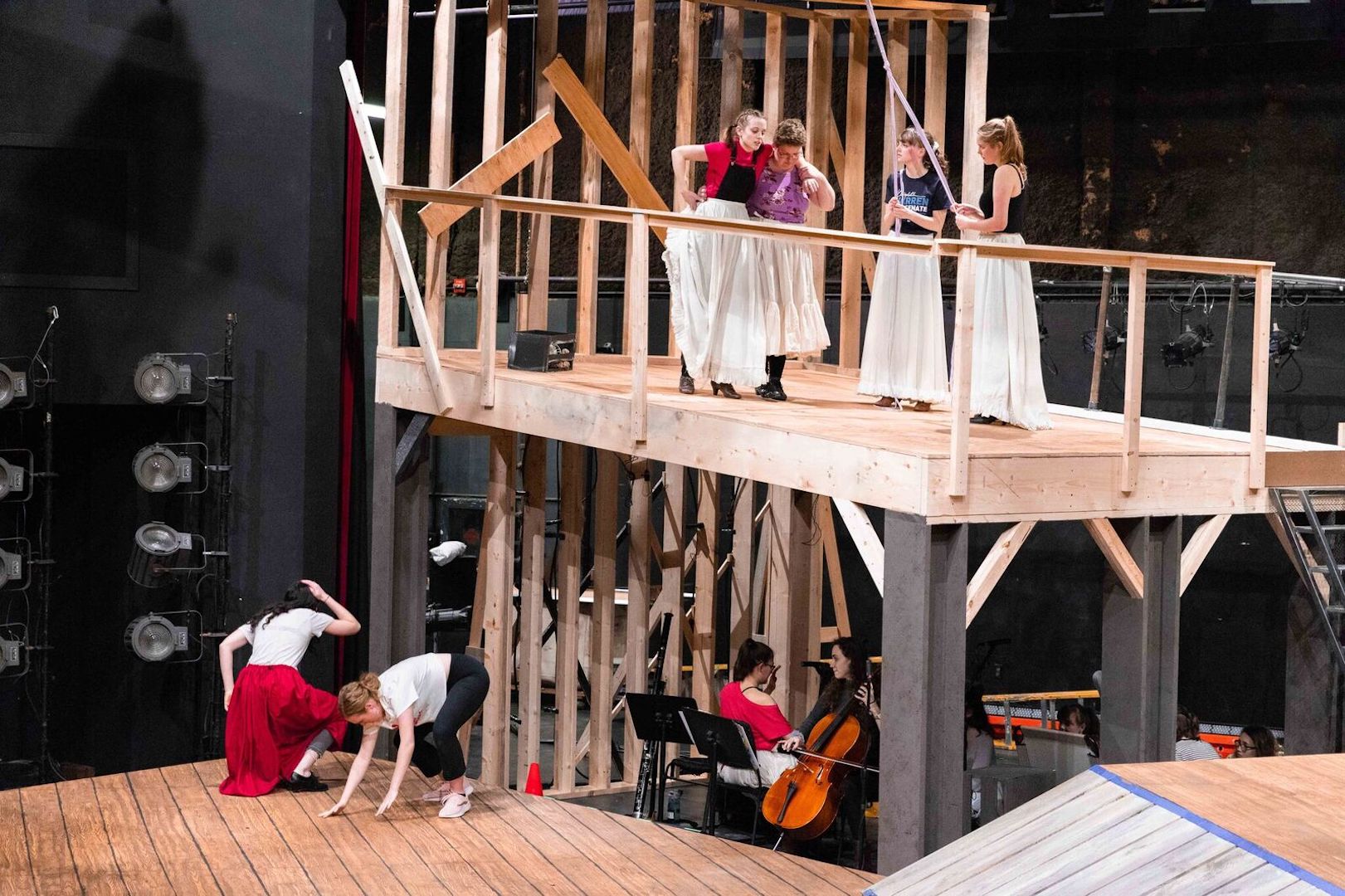
Photo: Dante Haughton ’19
In a play that employs an ensemble cast, and a process that involves lots of collaboration, I was also interested in hearing about what it was like to have the playwright in the room. Halpin says that, “it’s been awesome to watch the play evolve since we started working on it. The script looks fairly different from what it looked like in the beginning, but I really value that because we have gotten to see all the changes along the way and have been able to gather information from that.” March also states that “there’s a wonderful sense of clarity and openness when I am able to directly ask the playwright questions about my motivation, the words I’m saying, or the way my character interacts with others.”

Izzy Maher ’22 (Meg II), Jamin Garcia ’20 (Edith II), and Liliana Mastroianni ’22 (Rose II). Photo: Dante Haughton ’19
It is clear from my discussions with a few of the actors that there is a great sense of care surrounding the play’s subject matter, as well as between the members of the ensemble. In a play that involves familial lineage and shared traumas, the work put in by the cast and crew to create this sense of connection really shines through.
***
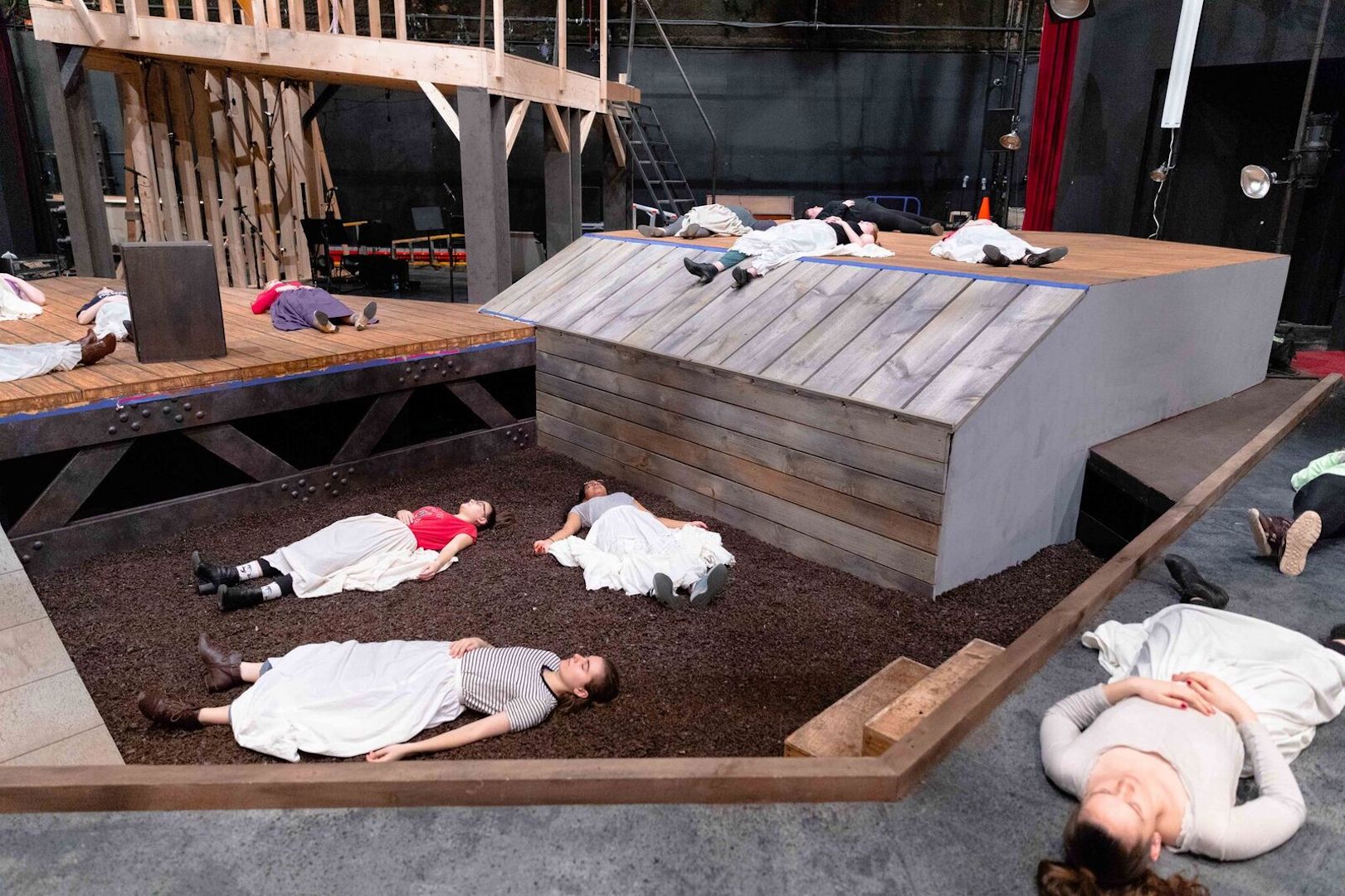
Photo: Dante Haughton ’19
We Used To Wear Bonnets & Get High All The Time opens Friday, November 16th and runs through Sunday, November 18th, and then runs again from Thursday, November 29th through Sunday, December 2nd. To purchase tickets or for further information, click here.
***
Megan Muratore is a senior writer for the Living Newsletter
